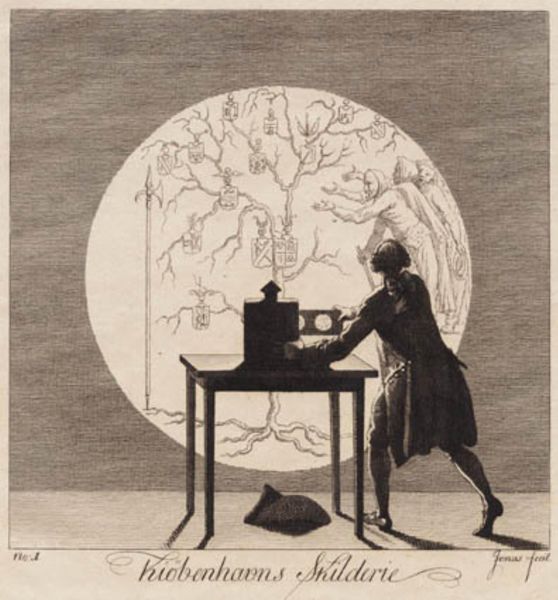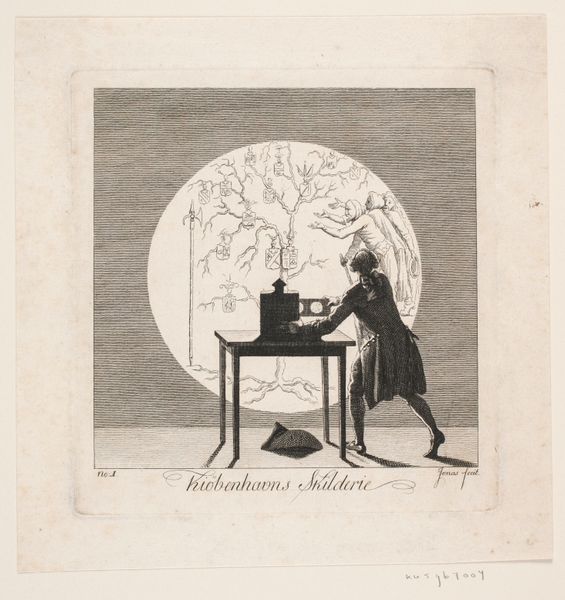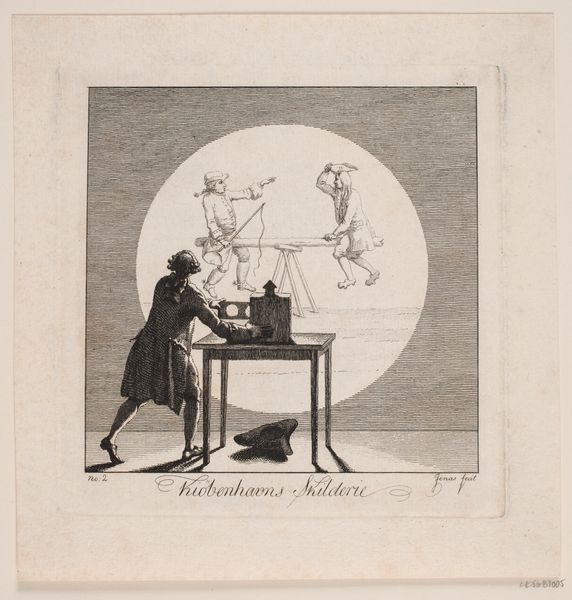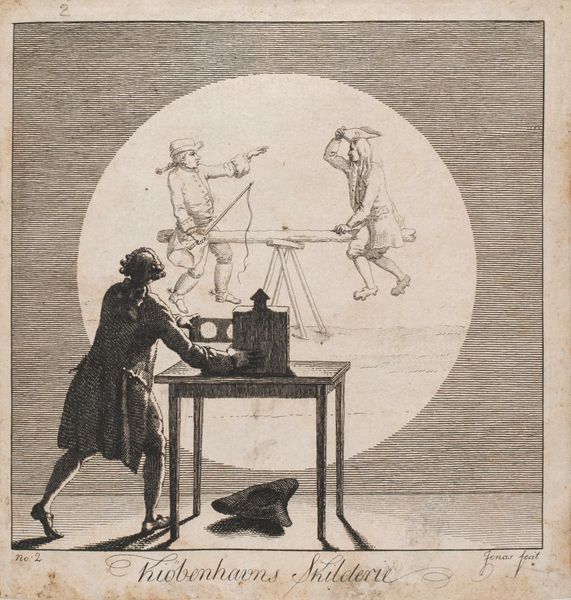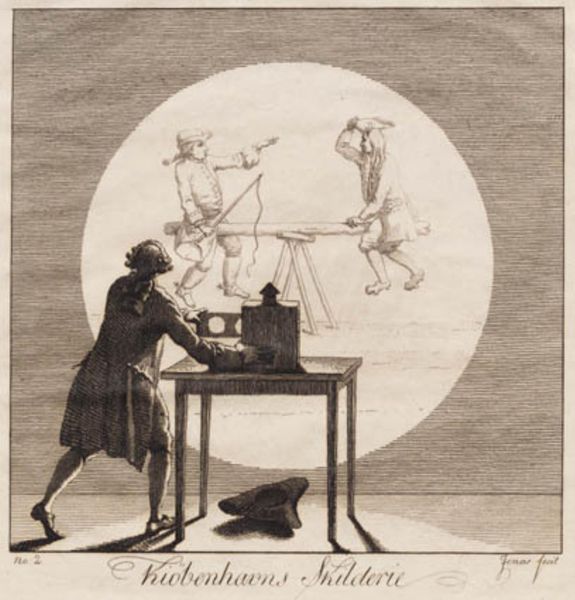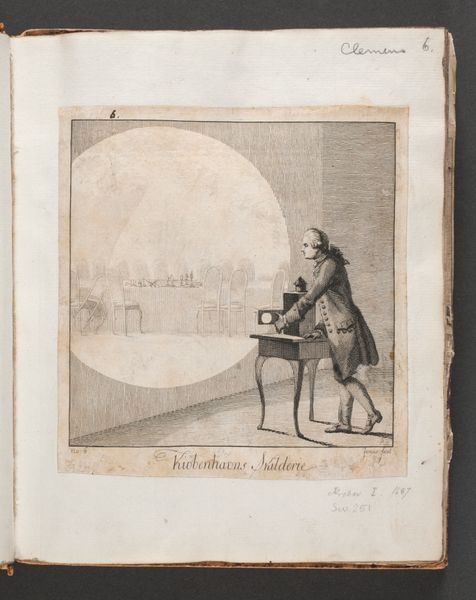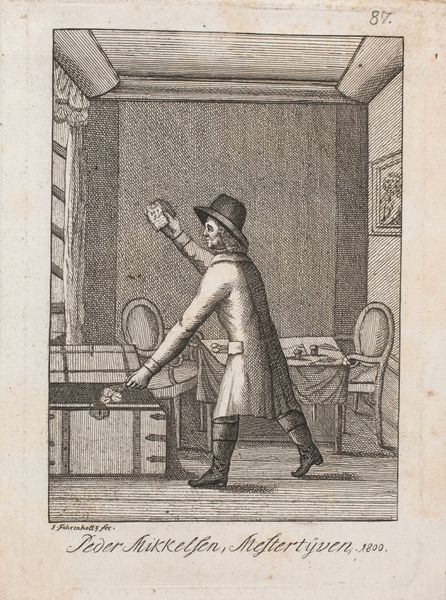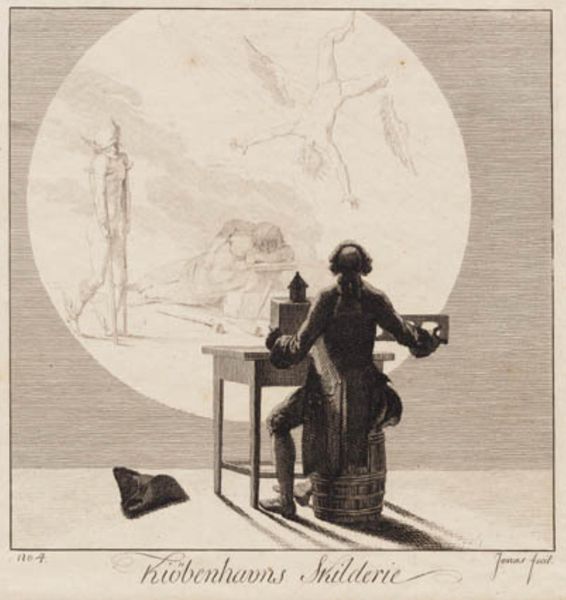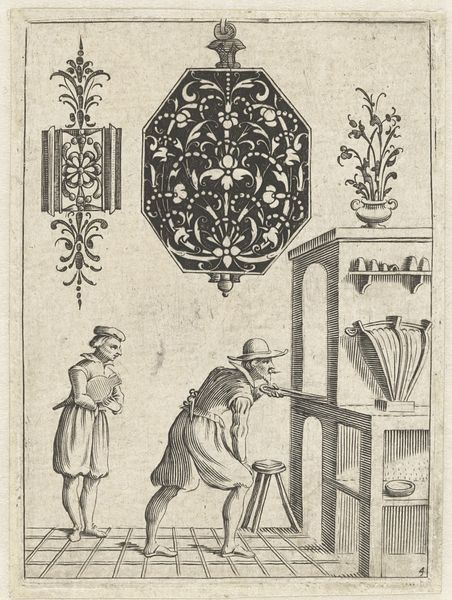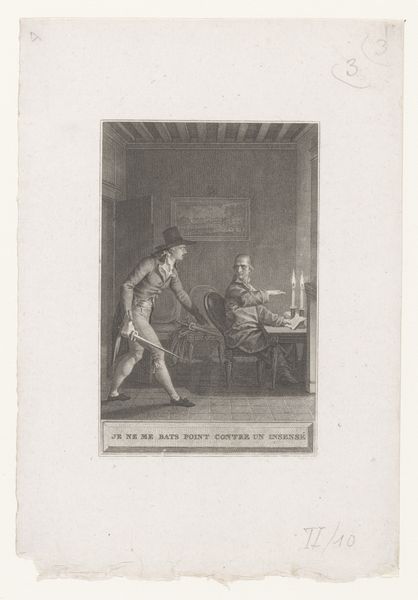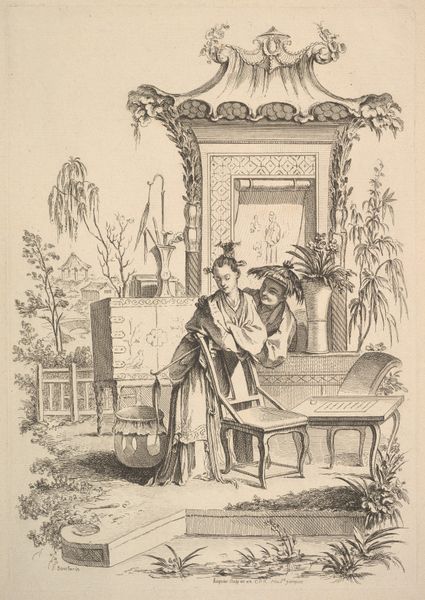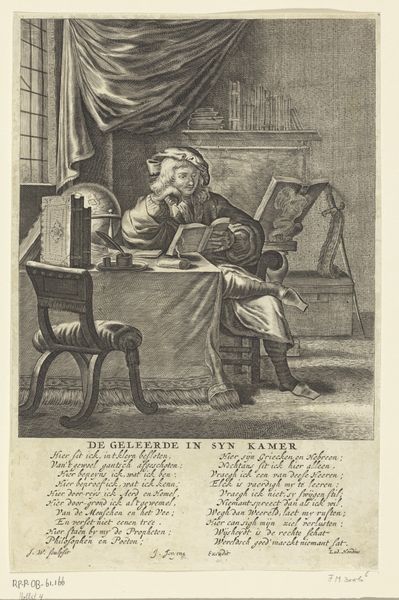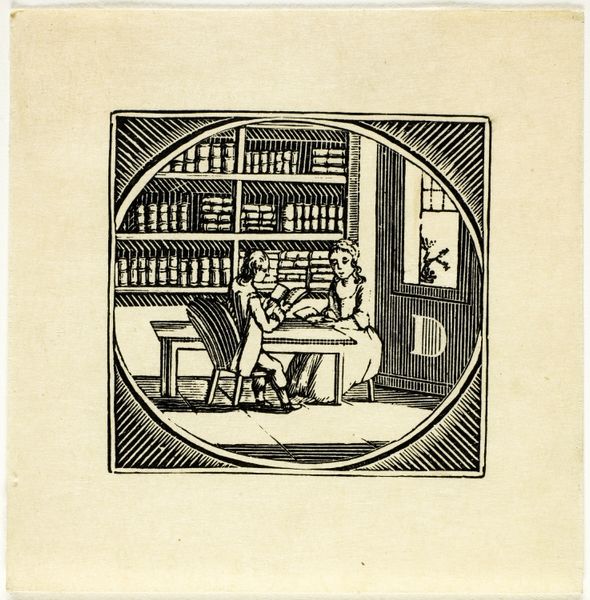
drawing, print, etching, paper, ink, engraving
#
portrait
#
drawing
#
neoclacissism
#
allegory
# print
#
etching
#
paper
#
ink
#
history-painting
#
engraving
Dimensions: 154 mm (height) x 145 mm (width) (bladmaal)
Editor: This etching from 1787, titled "Kjøbenhavns Skilderie" by J.F. Clemens, presents such an intriguing scene! It's monochromatic, focusing on a man using a boxlike camera obscura. What do you see in this piece that jumps out in terms of historical meaning or social commentary? Curator: This print functions as a fascinating visual argument about power and representation in late 18th-century Copenhagen. Consider the very act of depicting: who gets to represent whom, and with what authority? The camera obscura here could be seen as a tool of the Enlightenment, promising objective representation. Editor: Ah, I see! It’s like he’s capturing… history itself? The family tree with the crests really suggests lineage and legacy. Curator: Precisely! Note the figures reaching out—almost pleading—toward this genealogical tree displayed behind the camera obscura’s projected image. The nobility is literally being "captured." Are they attempting to claim control or influence of their historical narrative as it's depicted and recorded? The figures’ postures of supplication could tell us something about power dynamics in the era. Editor: That’s really insightful! So, is Clemens perhaps critiquing how history is being selectively recorded and controlled? Almost creating an archive in real time? Curator: Exactly! Think about who had access to these tools and knowledge at the time, and whose stories were deemed worthy of preservation. Does the print raise questions about historical accountability? Does it comment on issues like legacy and lineage being scrutinized in the public eye? The imagery suggests wealth being observed by, what seems to be, the artist himself, perhaps on behalf of common viewers. Editor: I hadn't considered that element of social class observing aristocracy! That’s shifted my perception of the whole scene. Curator: The camera becomes an instrument for reinforcing or questioning the status quo through visibility. That's something I take away from this image and its era.
Comments
No comments
Be the first to comment and join the conversation on the ultimate creative platform.
